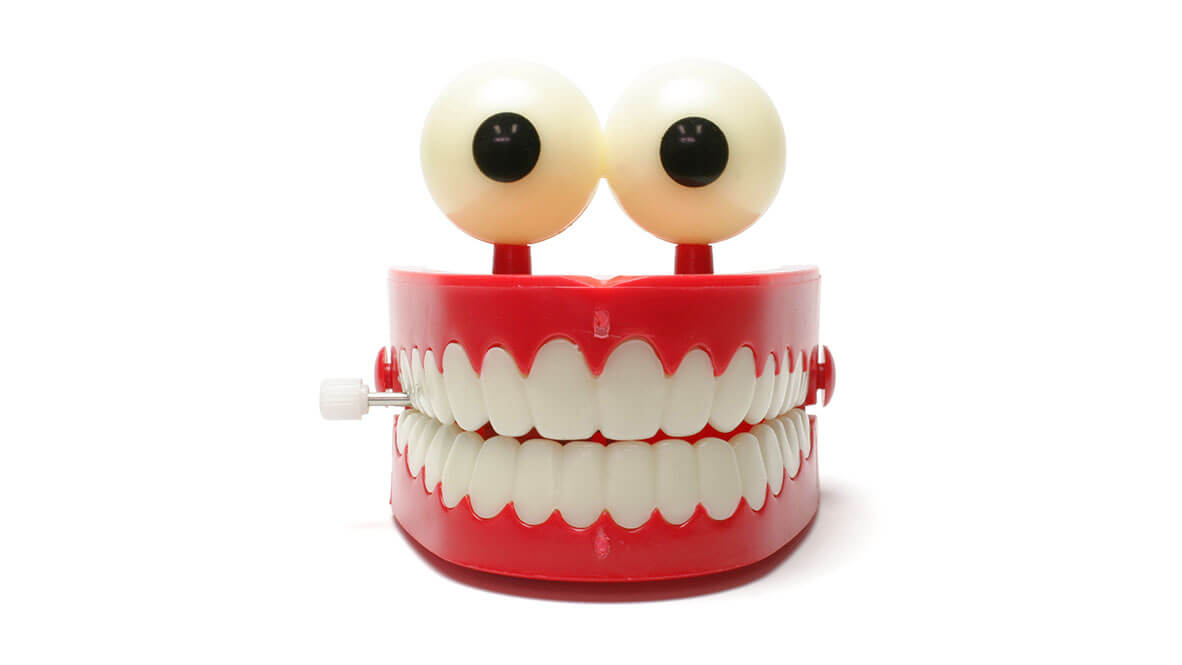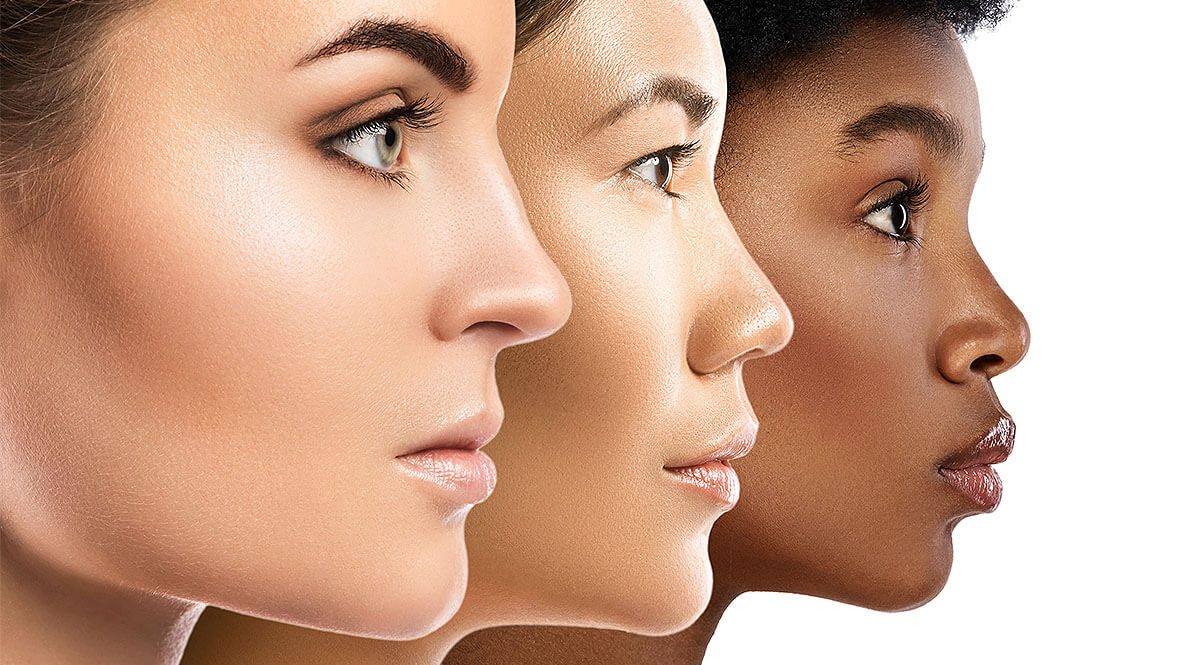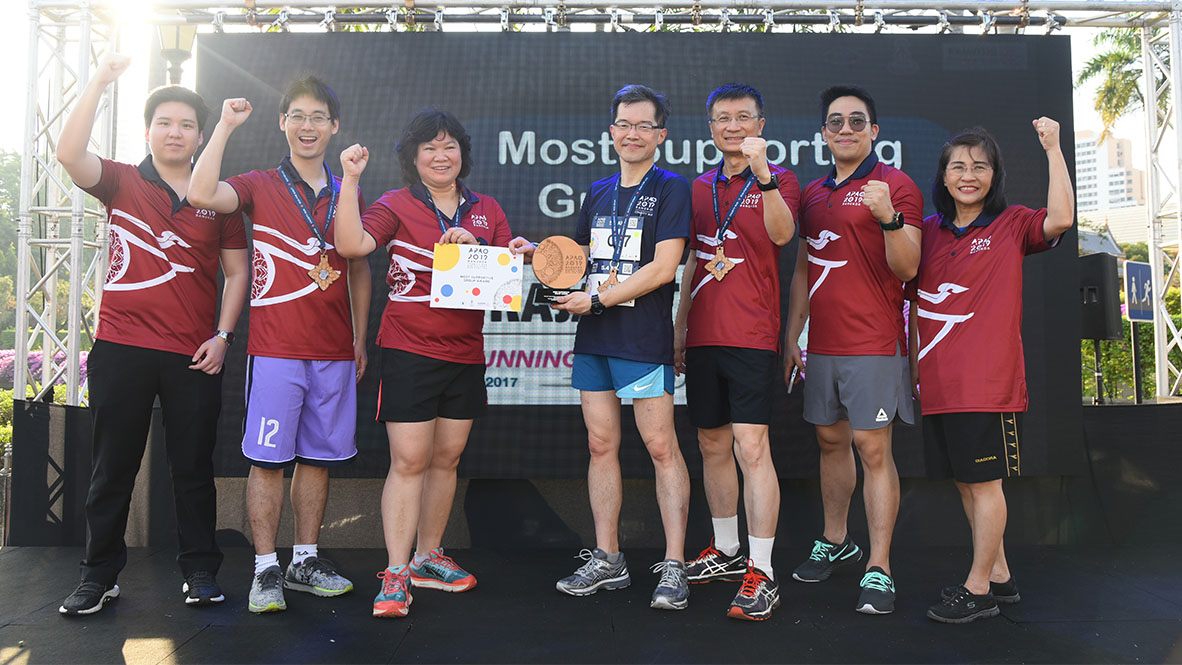If you were permanently blind, would you give up a healthy tooth for a functioning eye to be able to see again?
Although this may sound like a hypothetical question from the field of science fiction, a complex multi-stage surgical procedure called osteo-odonto-keratoprosthesis (OOKP) can actually restore vision in specific patients with severe forms of corneal blindness. Also known as the ‘tooth in eye’ surgery, this procedure may be a suitable choice for patients who are otherwise not candidates for corneal transplantation or other surgical options.
The Global Problem of Corneal Blindness
Corneal diseases are one of the leading causes of blindness globally and are among the major causes of irreversible visual impairment.1,2,8,16 Corneal blindness affects people of all age groups and is a considerable ophthalmic public health problem, especially in developing countries.1-3,9
Acquired loss of vision is generally associated with disability, depression, loss of productivity, and a reduction in quality of life. It is often accompanied by an array of social and psychological challenges that place a vast burden on the patients and their families.3-5,17 Hence, the importance of seeking, implementing and improving therapeutic solutions for all forms of corneal blindness cannot be overrated.
Treatment Options
For patients with irreversibly damaged corneas, corneal transplantation is often the only available treatment for restoring vision. In keratoplasty (KP), the diseased cornea is replaced with corneal tissue from a dead donor, and it remains the treatment of choice for most cases of severe corneal disease.
Ideally, KP would be performed in a larger number of patients. Nevertheless, a main problem with corneal transplantation remains the scarcity of good quality corneal grafts.9,11-13 In addition, the varied and complex epidemiology of corneal diseases means that a substantial number of patients with corneal blindness are not amenable to KP.
The degree of damage to the ocular surface is an important prognostic factor. In eyes with a severely damaged ocular surface, KP failure is considered almost inevitable, as a damaged surface cannot provide sufficient support for the graft. In these patients, using keratoprosthesis (KPro) is the only treatment with a potential of restoring functional vision.1,6,10,16
In KPro, the diseased cornea is replaced with an artificial cornea. Various types of synthetic corneas have emerged and undergone multiple tests and revisions over the past few decades with different rates of success, though the Boston KPro (type I and II) and the OOKP remain the principal models used in practice worldwide.1,6, 14,15
KPro can be divided into two main categories based on the status of the ocular surface, tear film and dryness level of the eye:1,14 KPro designed for eyes with normal ocular surface, intact tear film, eyelids and blink mechanism (i.e., Boston KPro type I); and KPro designed for eyes with severe ocular surface disease, severe dryness or incomplete blink (i.e., Boston KPro type II, OOKP).
Most KPro devices consist of a transparent central optic held in a cylindrical frame, as a replacement for the diseased cornea. The optical cylinder is supported by a peripheral non-biological skirt, made of an opaque, either porous or hard material (for example, polymethylmethacrylate [PMMA] or titanium in the Boston KPro), which enables fibroblasts cells ingrowth of the host tissue. This design promotes stability through the integration of the surrounding tissue with this part of the prosthesis.14,16
A Tooth for an Eye
Osteo-odonto-keratoprosthesis or OOKP is a unique type of keratoprosthesis with a biological skirt, in which an autologous tooth root and alveolar bone are prepared to form a disc-like structure that serves as a carrier for a PMMA optical cylinder. It was pioneered by the Italian ophthalmologist Benedetto Strampelli in 1963, and was later modified by Dr. Giancarlo Falcinelli.
Among all models of keratoprosthesis, OOKP is reserved for a minority of patients with bilateral corneal blindness as a result of autoimmune or other end-stage inflammatory ocular surface diseases, for example: Stevens-Johnson syndrome, Lyell syndrome, mucous membrane pemphigoid, trachoma and massive chemical or thermal burns. This category of eye conditions is characterized by severe chronic dryness and limbal stem cells deficiency that make the management and visual rehabilitation in these patients extremely challenging and difficult.
The efficacy of OOKP in the treatment of severe forms of corneal blindness resides in the unique combination of its components: osteo (bone) – odonto (tooth) – kerato (cornea) – prosthesis (artificial device). As an autologous biologic model of keratoprosthesis, OOKP has the advantage of good biocompatibility with a higher chance for biointegration, long-term anatomic retention and overall functional success. The entire complex is covered by autologous oral mucosa that provides further anchoring and protection and reduces the risk for extrusion and infections. In addition, OOKP does not require the use of systemic immunosuppressive drugs, which can be associated with certain risks and complications.1,7,16,18,19
The multi-stage surgery is performed by a multidisciplinary team of ophthalmologists, oral surgeons and radiologists. Thorough preoperative ophthalmological and oral assessments are necessary in order to evaluate the potential success of the procedure in each patient.1,20,21
Routine post-surgical assessments of the eye are essential to detect any changes or complications, especially laminar resorption, loosening of the optical cylinder, glaucoma, retinal detachment, endophthalmitis or extrusion of the implant. OOKP recipients must commit to lifelong follow-up visits and refrain from activities that can imperil the prosthesis.1,19,21
A Case of a 70-year-old Woman in Israel
In 2018, an OOKP surgery was performed in Israel for the first time, at the Rabin Medical Center, Petach Tikva. The patient is a 70-year-old woman who was blind for eight years. She lost her eyesight in both eyes due to severe ocular surface disease resulting from a life-threatening episode of Stevens-Johnson syndrome.
The surgical team included Dr. Eitan Livny (cornea and anterior segment surgeon), Dr. Iftach Yassur (oculoplastic surgeon and the head of the Oculoplastic Service Unit), Dr. Dror Allon (maxillofacial surgeon), and Prof. Irit Bahar (cornea specialist and the head of the Ophthalmology Department). “Our interest in OOKP arose when we had several blind patients who were not amenable to keratoplasty or any other transplantation options,” shared Dr. Livny.
Since the procedure has never been done in Israel, the team traveled together to Switzerland several times whenever an OOKP surgery was being performed there in order to learn this unique surgery. According to Dr. Livny: “I traveled together with my colleagues Dr. Yassur and Dr. Allon to Basel, Switzerland, where we studied the technique from our teachers Prof. David Goldblum (ophthalmologist), Prof. Christoph Kuntz and Dr. Isabelle Brit-Berg (both maxillofacial surgeons), who have years-long experience with OOKP.”
The team knew what was required to make the surgery successful. “This is a multi-stage surgical procedure; every stage takes many hours and requires utmost accuracy and focus. It was important for us to gain as much proficiency in every part of the surgery. Our teachers from Switzerland came to Israel to assist and participate in our first surgery in Israel,” added Dr. Livny.
So, what is the main advantage of using tooth and alveolar bone tissue to anchor the optical cylinder, as compared to using other autogenic tissues such as tibia bone? Dr. Livny explained that it is possible to use any hard biological tissue that would successfully anchor the artificial optical cylinder to its place.
“However, the best option is a tissue that can provide a long-term anatomic retention and will last for the lifetime of the patient,” he shared. “Although a bone can be used as a biological anchoring substance, the risk of laminar resorption is greater in comparison to dentin found in the tooth – thus using a tooth when available is preferred over a bone. Whenever a tooth is not available, using bone is an option. A tooth root is a hard and stable tissue and the alveolar bone attached to it integrates well with the soft tissue around the implant, giving the best overall long-term outcomes.”
Pushing Boundaries While Managing Expectations
OOKP is a demanding surgical procedure both for the medical team and the patient, and is performed only in a small number of specialized centers in the world. Kudos to the doctors who opt for this surgery because it certainly requires high surgical skills, meticulous preoperative preparation, well-synchronized team work, and the ability to tackle predicted and unpredicted complications in a timely and efficient manner. In the same manner, kudos to the patients, too, who must be physically and mentally able to withstand the long process with good attitude and patience, and have realistic expectations of the outcomes.
In the end, when all conditions are met, the results can be pleasing and even life-altering for these patients. By regaining the ability to perform activities of daily living independently, recognizing faces, reading signs and experiencing the surrounding sights – a significant improvement in their quality of life can be expected.1,17,19
“In OOKP we aim to reach good functional vision that will allow the patient to perform daily activities without assistance, look after their personal hygiene, watch TV, read and write, recognize faces etc.,” explained Dr. Livny. “We plan in advance to obtain some degree of myopia (minus spectacles) that will increase the peripheral vision. Eyeglasses are prescribed after the surgery.”
Almost one year after the OOKP surgery performed on their 70-year old patient, Dr. Livny shared that the patient is doing generally well. “The visual acuity in the operated eye is ~0.3, she is able to watch TV, read and write, recognize faces and perform activities of daily living. She suffered from epiretinal membrane (ERM) accompanied by macular edema about six months after the OOKP surgery, which is a serious complication that can develop following major eye surgeries. This condition required another retinal surgery. But our posterior segment specialist, Dr. Rita Ehrlich, was able to treat it successfully and without any impact on the visual acuity in this eye.”
With the success of the surgery, are they planning to perform more OOKP surgeries in Israel in the future? “Yes, we already plan the next surgery to take place in the summer this year,” confirmed Dr. Livny.
Contribution of OOKP in the Ophthalmic World
More than 50 years after its first appearance, OOKP remains the KPro of choice for restoring vision in patients with severe forms of corneal blindness not amenable to penetrating KP or other surgical options. Falcinelli’s further modifications and improvements of the original technique (referred to as the ‘Rome-Vienna Protocol’) became the gold standard, as far as visual and long-term anatomical outcomes are concerned. During several decades of clinical experience and follow-up, the superiority of OOKP over other KPro approaches has been supported by numerous clinical and histological studies.1,7,18,20,21
“Without this surgical option we could not offer these patients any therapeutic solution to restore their vision,” confirmed Dr. Livny. “Even though other surgical options do exist, they do not work as well in this specific category of patients. OOKP is still a very complex, long and risky surgical procedure; it is expensive and requires the full commitment of the entire surgical team. While taking these limitations into account, it is currently the most promising surgical option with the best long-term functional and anatomical outcomes for patients with bilateral corneal blindness due to limbal stem cell deficiency accompanied by severe ocular dryness.”
Strampelli’s technique presented a creative, complex yet achievable solution for a very challenging medical problem. His innovative, multidisciplinary approach paved the way for ample research in this field and inspired researchers worldwide to investigate and develop alternative biocompatible materials to successfully replace the tooth and alveolar bone in the future.
References
1 Kaur J. Osteo-odonto keratoprosthesis: Innovative dental and ophthalmic blending. J Indian Prosthodont Soc. 2018;18(2): 89-85.
2 Robaei D, Watson S. Corneal blindness: a global problem. Clin Exp Ophthalmol. 2014;42(3):213-214.
3 Gupta N, Tandon R, Gupta SK, Sreenivas V, Vashist P. Burden of Corneal Blindness in India. Indian J Community Med. 2013;38(4):198-206.
4 Moschos MM. Physiology and psychology of vision and its disorders: a review. Med Hypothesis Discov Innov Ophthalmol. 2014;3(3):83-90.
5 Welp A, Woodbury RB, McCoy MA, Teutsch SM. Making Eye Health a Population Health Imperative: Vision for Tomorrow. Washington (DC). National Academies Press (US); 2016.
6 Liu C, Paul B, Tandon R, et al. The osteo-odonto-keratoprosthesis (OOKP). Semin Ophthalmol. 2005;20(2):113-128.
7 Sarode GS, Sarode SC, Makhasana JS. Osteo-odonto-keratoplasty: A Review. J Clin Experiment Ophthalmol. 2011;2:188.
8 World Health Organisation Visual Impairment and Blindness 2010. Available at: https://bit.ly/2Tpf79E
9 Wong KH, Kam KW, Chen LJ, Young AL. Corneal blindness and current major treatment concern – graft scarcity. Int J Ophthalmol. 2017;10(7):1154-1162. 10 Al-Swailem SA. Graft failure: II. Ocular surface complications. Int Ophthalmol. 2008; 28(3):175-189.
11 Gain P, Jullienne R, He Z, et al. Global Survey of Corneal Transplantation and Eye Banking. JAMA Ophthalmol. 2016;134(2):167-173.
12 Lambert NG, Chamberlain WD. The structure and evolution of eye banking: a review on eye banks’ historical, present, and future contribution to corneal transplantation. J Biorep Sci Appl Med. 2017;5:23-40.
13 Williams AM, Muir KW. Awareness and attitudes toward corneal donation: challenges and opportunities. Clin Ophthalmol. 2018;12:1049–1059.
14 Salvador-Culla B, Kolovou PE. Keratoprosthesis: A Review of Recent Advances in the Field. J Funct Biomater. 2016;7(2):13.
15 Iyer G, Srinivasan B, Agarwal S, et al. Keratoprosthesis: Current global scenario and a broad Indian perspective. Indian J Ophthalmol. 2018;66(5):620-629. 16 Moussa S, Reitsamer H, Ruckhofer J, Grabner G. The Ocular Surface and How It Can Influence the Outcomes of Keratoprosthesis. Curr Ophthalmol Rep. 2016;4(4): 220-225.
17 Seybold D. The psychosocial impact of acquired vision loss—particularly related to rehabilitation involving orientation and mobility. Int Congr Ser. 2005;1282:298-301.
18 Ciolino JB, Dohlman CH. Biologic keratoprosthesis materials. Int Ophthalmol Clin. 2009;49(1):1-9.
19 Tan A, Tan DT, Tan XW, Mehta JS. Osteo-odonto keratoprosthesis: systematic review of surgical outcomes and complication rates. Ocular Surf. 2012;10(1):15-25.
20 Falcinelli G, Falsini B, Taloni M, Colliardo P. Modified osteo-odonto-keratoprosthesis for treatment of corneal blindness: long-term anatomical and functional outcomes in 181 cases. Arch Ophthalmol. 2005;123(10):1319-1329.21 Hille K, Grabner G, Liu C, Colliardo P, Falcinelli G, Taloni M. Standards for modified osteoodontokeratoprosthesis (OOKP) surgery according to Strampelli and Falcinelli: the Rome-Vienna Protocol. Cornea. 2005;24(8):895-908.
Main indications for KPro:
- Bilateral corneal blindness
- History of one or multiple corneal transplantation failures with poor prognosis for further donor corneal grafting
- Eye conditions that predict high risk for KP failure
- Patient’s lack of access to donor corneal tissue
Stage 1 of OOKP surgery includes two parts:
Stage 1A
- The entire ocular surface is removed.
- A full thickness buccal mucosa membrane graft is harvested and prepared.
- The buccal graft is placed over the corneal and sclera surface and then sutured onto the sclera.
Stage 1B
- A single-rooted tooth is harvested along with the surrounding intact alveolar bone from the patient’s jaw.
- The osteo-odonto lamina is prepared and a hole is drilled for the optical cylinder.
- The PMMA optical cylinder is inserted into the hole and cemented to the dentine of the tooth root.
- The ready OOKP lamina is implanted into a subcutaneous or a submuscular pocket in the contralateral infraorbital area, where it remains for two to three months for vascularisation and integration.
Stage 2 is performed two to four months after stage 1, when the buccal graft is well established and vascularised.
- The implanted osteo-odonto lamina is explanted from the subcutaneous or submuscular pocket together with the fibrovascular tissue that formed around it.
- The buccal graft is reflected inferiorly and the cornea is exposed.
- Central trephination of the cornea is performed.
- Iris, lens, and anterior vitreous are removed.
- The implant is sutured over the cornea.
- The buccal mucosa graft is replaced and repositioned over the lamina with a central trephination to expose the optical cylinder.




